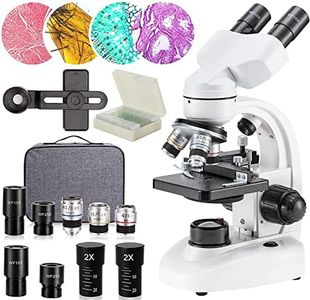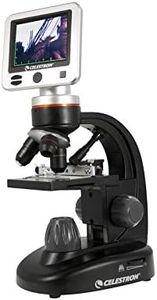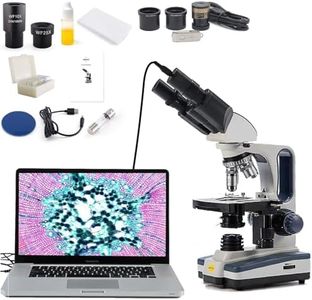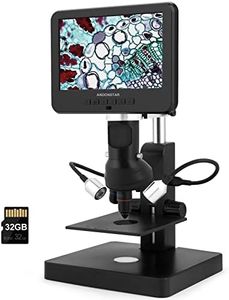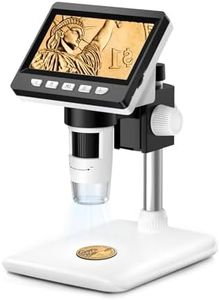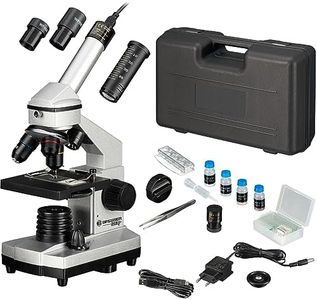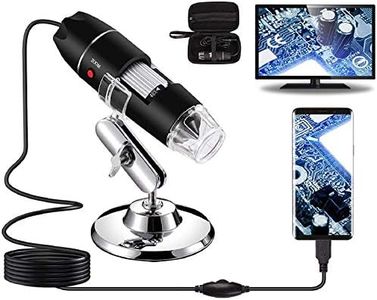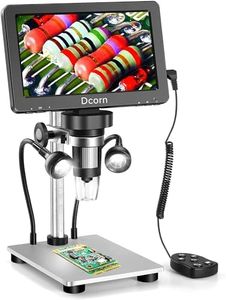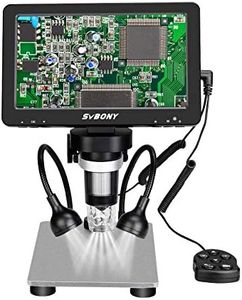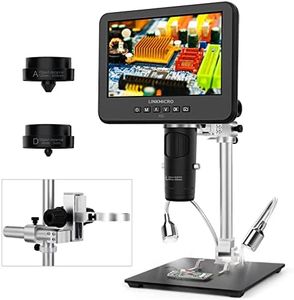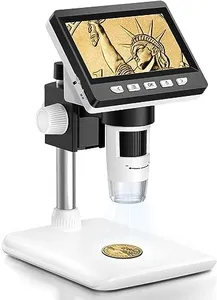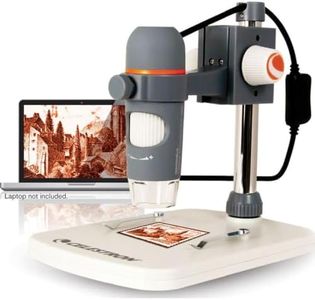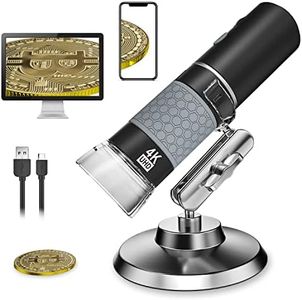We Use CookiesWe use cookies to enhance the security, performance,
functionality and for analytical and promotional activities. By continuing to browse this site you
are agreeing to our privacy policy
10 Best Digital Microscopes
From leading brands and best sellers available on the web.Buying Guide for the Best Digital Microscopes
Choosing a digital microscope is both exciting and highly practical, whether you're interested in education, hobby work, professional analysis, or research. A digital microscope combines traditional magnification with a digital camera that lets you view and even record images on a screen. To pick the right one for your needs, it’s wise to focus on a balance between clarity, magnification, ease of use, and connectivity. By understanding the main specifications, you’ll be able to match a microscope’s strengths with your specific purposes, ensuring you get a device that’s both enjoyable and useful for your tasks.Magnification RangeMagnification range describes how much larger a microscope can make tiny objects appear. This is important because it sets the level of detail you will be able to observe. Low magnification (less than 50x) is best for coins, stamps, or circuit boards; mid-range (50x to 200x) suits biological samples like plant cells; high magnifications (over 200x) are suited for viewing microorganisms or detailed cell structures. To choose the right magnification, consider what you plan to examine—pick a microscope with a range that matches your intended uses, bearing in mind that the highest numbers are only useful if you need to see ultra-fine details.
ResolutionResolution, often measured in megapixels, tells you how clear and detailed the image or video captured by the microscope’s camera will be. Higher resolution means crisper and sharper images. Entry-level models may have lower resolutions (around 1-2 megapixels) suitable for basic viewing, mid-range options (3-5 megapixels) offer good clarity for research and documentation, while higher-end devices (over 5 megapixels) are best for tasks that demand very fine detail. For most users, a mid-range resolution is sufficient, unless documenting fine details for analysis is your main goal.
Display TypeThe display type describes how you see the image: on a built-in screen, an external monitor or a computer. Some microscopes have their own LCD screens, making them portable and easy to use anywhere. Others must be connected to a computer or mobile device, which may allow for larger viewing but can reduce portability and quick setup. Choose a display type that fits your environment—built-in screens are great for field work or classrooms, while computer connectivity suits labs or situations where large group viewing is needed.
LightingLighting refers to the built-in illumination around the lens, which helps clearly see samples. Good lighting is crucial for seeing details, especially at higher magnifications. Most digital microscopes use LED lights, which vary in number and adjustability. Simple models have fixed lights, while more advanced ones let you control brightness or angle. Choose a microscope with adjustable lighting if you plan to view samples that reflect light or if you'll need to adapt to different objects.
Focusing MechanismThe focusing mechanism lets you sharpen the image. Some microscopes offer manual focus—good for precision and fine-tuning—while others offer autofocus for simplicity and speed. Manual focus suits careful examination and when you want precise control, ideal for close-up work. Autofocus works best for quick checks, beginners, or when sharing the device among different users. Think about whether you value speed or precise control to determine what focusing system fits best.
ConnectivityConnectivity describes how the microscope communicates with other devices. Common options include USB, Wi-Fi, or HDMI. USB is standard for plugging into computers, Wi-Fi enables wireless connection to phones or tablets for greater mobility, and HDMI allows direct output to TVs or monitors. Select connectivity that fits your workflow—USB for easy computer use, Wi-Fi for movement and sharing, HDMI for group displays.
Recording CapabilitiesRecording capabilities refer to whether the microscope can save images or videos. Some have built-in storage or SD card slots, while others must record through a connected device. If you intend to document or share your findings, make sure your microscope supports convenient saving—this is especially helpful for educational projects or research work.
